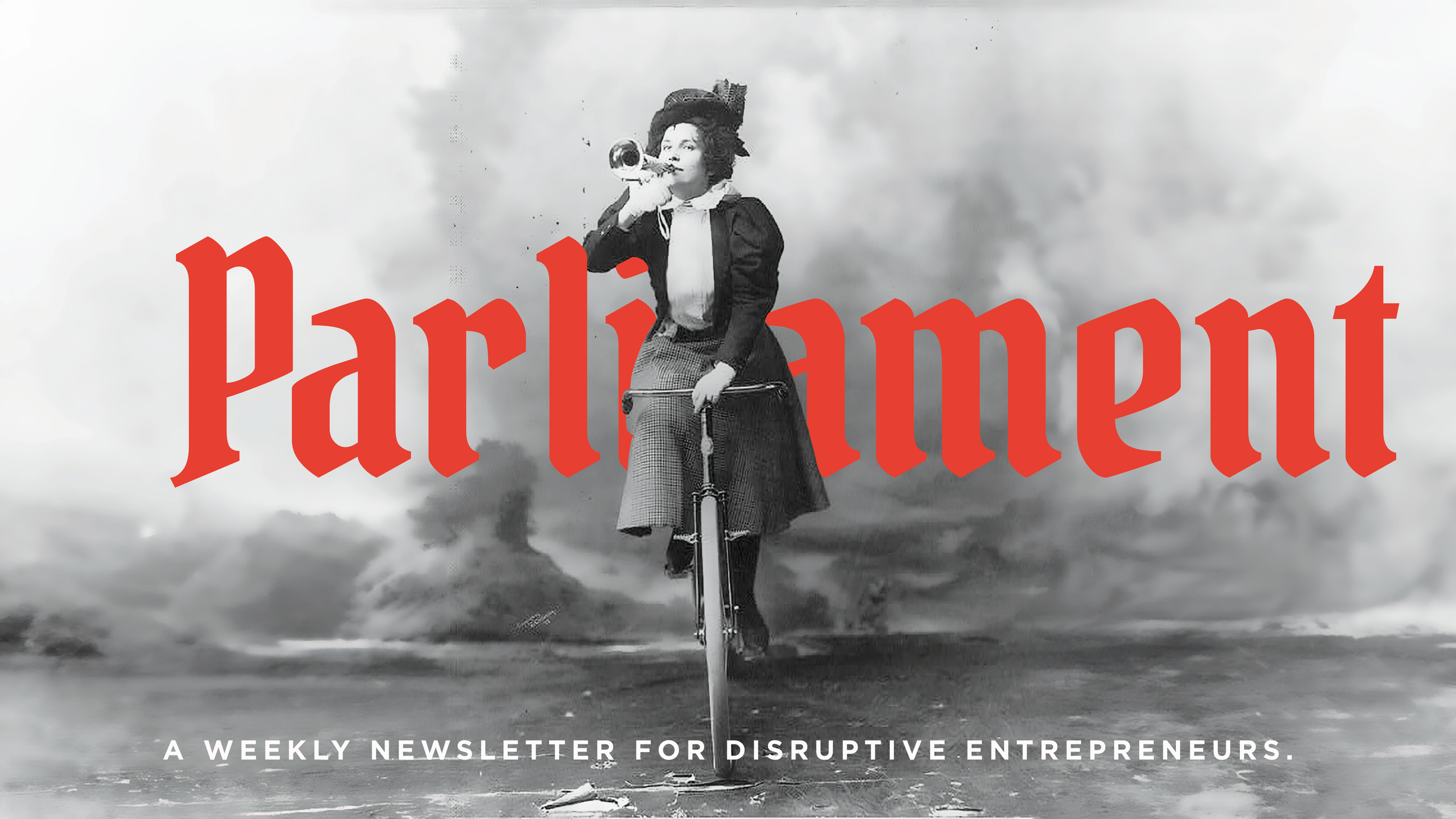Parliament | Why Real Rebranding Changes Everything
Pop quiz: What's the difference between a makeover and a metamorphosis? One's skin deep, the other changes you from the inside out. And when it comes to rebranding, guess which one actually drives growth?
The Big Misconception About Rebranding
Let's bust a myth right out of the gate: Rebranding isn't just about getting a shiny new logo or a fresh color palette (though we won't lie – that part's pretty fun). According to a recent Inc. Magazine feature referencing our work with Handker Bandanas, strategic rebranding can be the rocket fuel your business needs to blast through growth barriers.
The Missing Link: Your Brand Being
While Inc. nails the 'what' of strategic rebranding (scalability, internal alignment, and employer branding), we're here to talk about the 'why' – and it starts with how you see yourself.
Here's where the magic happens:
Scalability Starts with Self-Awareness
Inc says: "Every business can grow, but a strong brand can scale with purpose and efficiency."
We say: Exactly. But that purpose has to come from somewhere real. When you're crystal clear on who you are, scaling isn't just about getting bigger – it's about becoming more of yourself.
Internal Alignment? It's an Inside Job
Inc. says: "A weak or unclear brand will get in the way of alignment efforts without fail."
We say: Preach! But here's the secret sauce – alignment isn't about everyone marching to the same drum. It's about everyone understanding and embodying your company's true nature. When you change how you see yourself, your team's alignment happens organically.
The Employer Brand Revolution
Inc says: "Small businesses can leverage the power of a household business name."
- We say: Better yet, they can create something more powerful – a magnetic culture that attracts the right people because it's authentic to who you really are.
The Handker Story: More Than Just Numbers
The Inc. article mentions our work with Handker, noting their 200% growth post-rebrand. But let's talk about what really happened there:
We didn't just give them a new look
We helped them discover who they truly were: a brand "for everyday adventures"
That clarity became their compass, guiding everything from product development to customer experience
Why This Matters Now More Than Ever
In a world where authenticity is currency and trust is gold, surface-level rebrands are like throwing good money after bad.
The companies that will thrive are the ones brave enough to look in the mirror and embrace what they see – then amplify it.
Your Next Moves
Get Honest: Are you trying to change how the world sees you, or are you ready to change how you see yourself?
Dig Deep: What's really driving your desire to rebrand? Growth? Alignment? Or something deeper?
Think Beyond the Visual: Your brand isn't just what you show the world – it's how you move through it.
Remember: At Hoot, we're not here to change how the world sees you. We're here to change how you see yourself. Because when you're clear on who you are, the world can't help but take notice.
Ready to explore what a strategic rebrand could unlock for your business? Let's talk about how the Brand Being Method can help you discover and amplify your true identity.
Artwork by Nya McClain, article by Senior Art Director, Bri Thomas
Your Brand Is Not Your Logo
And your logo isn't going to save your company
The Persistent Myth
"We need a new logo to turn things around." "Our rebrand will fix our company culture." "If we just update our visual identity, sales will improve."These statements echo through boardrooms and startup offices like prayers to the god of quick fixes. But here's the uncomfortable truth: your logo is not your brand, and a new visual identity alone won't save a struggling company.
The Reality Check
Your brand isn't a beautiful logo, a clever tagline, or a perfectly curated Instagram feed. Those are just the clothes your brand wears. Your actual brand is:
How your employees talk about their work at dinner parties
What customers say when you're not in the room
The feeling people get when they interact with your company
The cumulative impact of every decision you make
The Logo Fallacy
Think of your favorite brands. Do you love Apple because of its apple icon, or because of the experiences its products create? Do you trust Nike because of its swoosh, or because of decades of consistently delivering on its promises?A great logo can't save a bad experience, but a great experience can elevate even the simplest logo. The Nike swoosh isn't powerful because of its design (though it's beautifully simple) – it's powerful because of what Nike has done while wearing it.
What Actually Matters
Your brand is built in the trenches of daily operations:
How you treat your employees
How you handle customer complaints
The quality of your products or services
The decisions you make when no one is watching
The culture you create internally
The Bottom Line
Stop thinking of your brand as something you can fix with a fresh coat of paint. Start thinking of it as something you build through consistent, purposeful action over time.
Your brand isn't what you say it is. It's what they say it is


